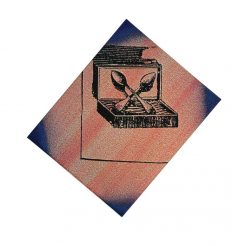Sigmar Polke
Sigmar Polke's oeuvre is characterised by an unconventional love of experimentation in a variety of techniques, materials and motifs. After his apprenticeship as a glass painter, Sigmar Polke studied at the Düsseldorf Art Academy from 1961-67 under Karl Otto Götz and Gerhard Hoehme. Together with Konrad Lueg and Gerhard Richter, he created an ironic counter-movement to "Socialist Realism" under the term "Capitalist Realism". As a reaction to the Pop Art movement in the UK and the USA, he took up motifs from everyday culture and advertising in his works and, for example, cited forms of commercial printing in his painting in a "Rasterbilder". In addition to numerous other awards, he received the prize for painting at the XIII Bienal de São Paulo in 1976 and the Golden Lion at the Biennale di Venezia ten years later.
